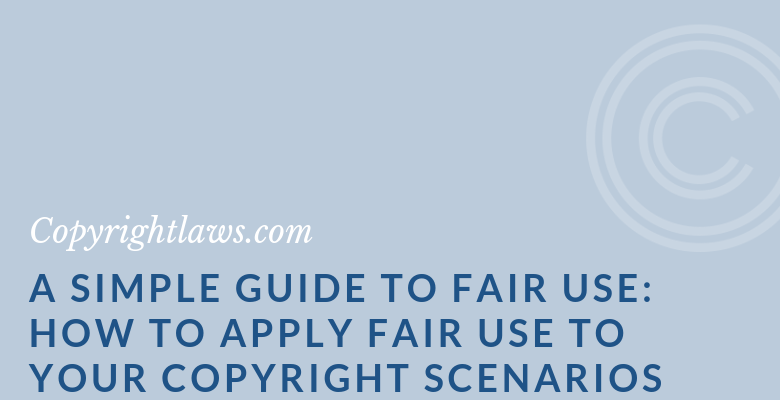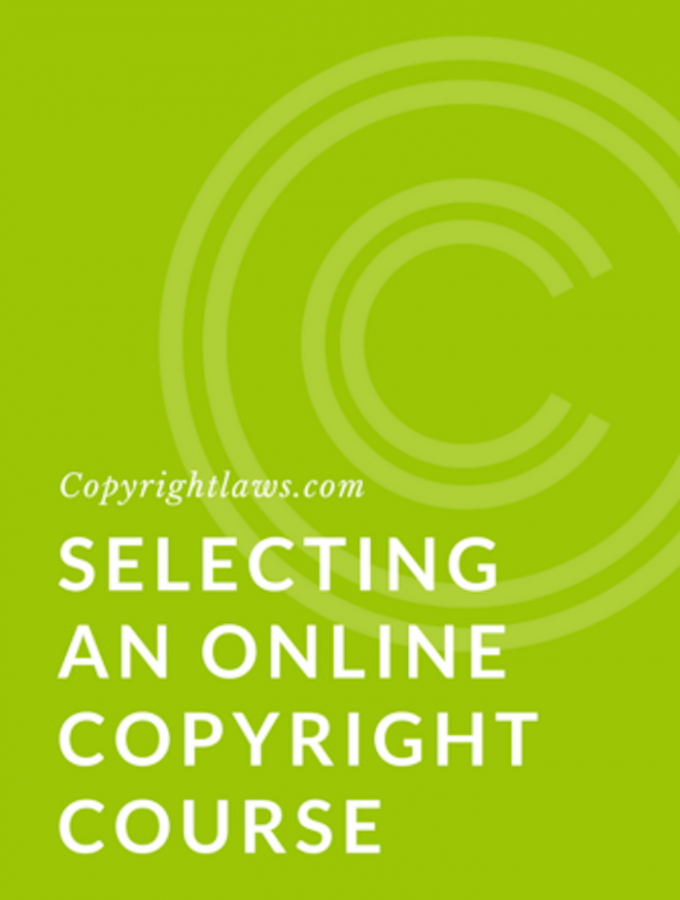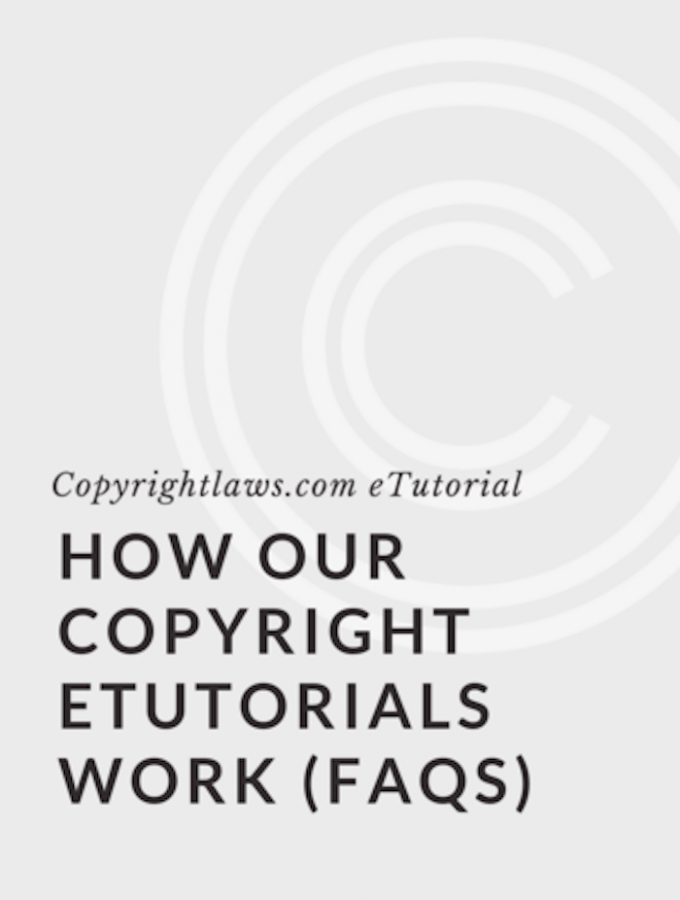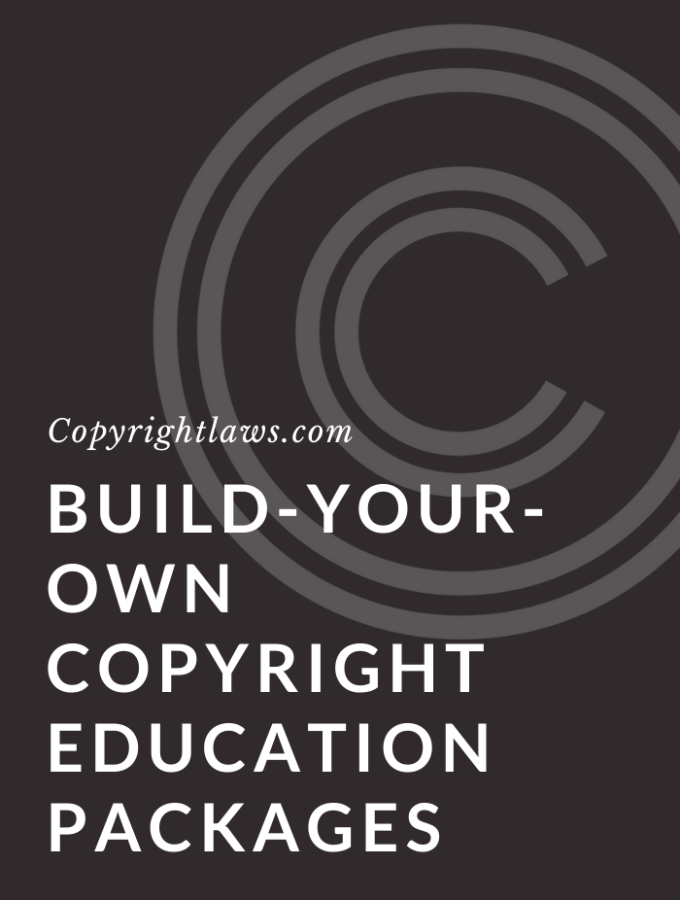
Understanding fair use in U.S. copyright law is essential for anyone using copyright-protected materials. Fair use is ambiguous and it can be overwhelming to apply it to your own situations. Inform yourself about the facts of fair use and how it works. Be an educated decision maker when determining whether fair use applies to your specific circumstances. This article provides essential information that you can immediately apply to your own situations and fair use analyses.
As a bonus, use this form to download the PDF A Simple Guide to Fair Use: How to Apply Fair Use to Your Copyright Scenarios.
If the form above doesn't work, follow this link to sign up.
Quick Navigation to A Simple Guide to Fair Use
- Applying Fair Use Is a Judgment Call
- Fair Use in U.S. Copyright Law is Ambiguous
- Fair Use Purposes and Factors
- The U.S. Copyright Office Fair Use Index
- Does Fair Use Apply Outside the U.S.?
- 5 Essential Facts About Fair Use
Applying Fair Use Is a Judgment Call
You don't need to be a copyright law expert to understand fair use. What scares people away from applying fair use to their circumstances is that this principle isn't clear-cut. It requires an analysis and application of the fair use factors to each particular set of circumstances.
Be aware, however, that the application of fair use in U.S. copyright law is never a certain thing unless a judge in a court of law makes that fair use determination.
You need to become comfortable with the basics of fair use and making judgment calls on applying it to your particular use of copyright-protected materials. Applying fair use also requires understanding copyright risk management so you can minimize your risk of copyright infringement.
Fair Use in U.S. Copyright Law Is Ambiguous
Fair use is a doctrine created by courts in the nineteenth century, but it only became codified and set out in law through in the 1976 U.S. Copyright Act.
Many complain that fair use is ambiguous. But fair use is intentionally open and flexible. Its language allows you to apply the doctrine to a wide variety of circumstances. And each situation must be reviewed on its own particular facts when you apply fair use to it.
Some organizations institute a policy of prohibiting the application of fair use because of its uncertain nature and the need to analyze each fair use situation. Other organizations designate certain key people (e.g., a copyright specialist or librarian) to make all fair use application decisions. Others allow individuals to make their own fair use determinations. Know your organization’s position on applying fair use.
Fair Use Purposes and Factors
Fair use in U.S. copyright law may be applied by individuals and corporations, by commercial and noncommercial entities, and in for-profit and nonprofit situations. It all depends on the facts of your situation and how these facts fit within the four fair use factors.
Section 107 of the U.S. Copyright Act states that the fair use of a copyrighted work isn't an infringement of copyright, for purposes such as:
- Criticism
- Comment
- News reporting
- Teaching (including multiple copies for classroom use)
- Scholarship, or
- Research
The Copyright Act then states that in determining whether a use is fair use, the following four fair use factors must be considered:
1. The purpose and character of the use, including whether such use is of a commercial nature or is for nonprofit educational purposes
2. The nature of the copyrighted work
3. The amount and substantiality of the portion used in relation to the copyrighted work as a whole, and
4. The effect of the use upon the potential market for or value of the copyrighted work
Section 107 also states "The fact that a work is unpublished shall not itself bar a finding of fair use if such finding is made upon consideration of all of the above factors."
Take the time to read the exact wording of the fair use provision in the Copyright Act. You'll find it a great starting point for understanding fair use.
Understanding the Fair Use Factors
You'll need a deeper understanding of each of the four fair use factors to apply it to your situations. Here are some tips ...
- Purpose and character of use — Generally, use for a nonprofit educational or noncommercial purpose is more likely to be considered fair use than use for a commercial purpose. If the use adds something new or has a different purpose or character than the original use, then it may be considered a “transformative use.” Many transformative uses are fair use. Similar to fair use itself, whether a use is a transformative use is often unclear.
- Nature of the protected work — Use of a factual work is more likely to be considered fair use than use of a fictional or more creative work. An unpublished work is less likely to be fair use than a published work.
- Amount and substantiality of the portion used relative to the work as a whole — Both the quantity of the portion used and its quality — whether the copied portion constitutes the “heart” of the total work — are relevant. The Act doesn't set out a threshold level of amount or substantiality. For example, the Act doesn't state that using three or ten percent of a work constitutes fair use. If the amount you use is quite small in relation to or insignificant in the context of the entire source work, then it's more likely to be fair use.
- Effect on the Protected Work's Market or Value — At issue is whether the use of the copied portion competes with the copyrighted work. If the use diminishes the potential market for the copyrighted work, it's less likely to be fair use.
See all Copyrightlaws.com's free downloadable Simple Guides to Copyright.
The U.S. Copyright Office Fair Use Index
To help you better understand how the four factors apply to specific situations, the U.S. Copyright Office provides a free Fair Use Index. The goal of the index is “to make the principles and application of fair use more accessible and understandable to the public by presenting a searchable database of court opinions.”
You can search the index by:
- Jurisdiction
- Category (e.g., literary, artistic, or musical work)
- By your type of use (e.g., education/scholarship/research, parody, or internet/digitization)
The index tracks court decisions at various levels. However, it isn’t intended to be a comprehensive archive of all fair use cases ever decided. It’s user-friendly and designed for lawyers and nonlawyers alike.
The index sets out:
- The name of the case
- The court
- The jurisdiction
- The year of the decision
- Whether fair use was found by the court
Click on the case name/citation for a summary of the case, which includes the key facts, issue, outcome and more.
Does Fair Use Apply Outside the U.S.?
In the close to 200 countries that are members of the Berne Convention, the leading copyright treaty, international copyright law works by applying the law of the country where you're using a work.
Therefore, whether you're reproducing an image from the U.S. or France or India, you apply U.S. law if the reproduction takes place in the U.S., meaning you could apply the principle of fair use. If the reproduction takes place in France, for instance, then you apply French copyright law and the principles set out in the French copyright act.
Five Essential Facts About Fair Use
To effectively apply fair use in U.S. copyright law to your situations, you need to understand as much as you can about this doctrine, read court decisions about fair use, and gain practice in applying fair use to different scenarios.
The following five essential facts will help guide you through the fair use maze.
1. Fair use in U.S. copyright law is intentionally open and flexible
The U.S. Copyright Act addresses fair use in Section 107, “Limitations on exclusive rights: fair use.” The Act's language allows you to apply the doctrine to your own specific fact situations. Many who apply fair use complain that it's ambiguous and should be more specific to specific uses. It's intentionally open and flexible to apply to various situations. Every fair use determination must be carefully considered based on the particulars of the situation.
2. Fair use may apply to a variety of purposes
Section 107 of the U.S. Copyright Act states that fair use may apply to the use of a copyrighted work “for purposes such as criticism, comment, news reporting, teaching (including multiple copies for classroom use), scholarship, or research ...." These are illustrative and other purposes may also fall within fair use.
3. There are four fair use factors to consider to determine if fair use applies
Fair use depends on the facts of your situation and how they fit within the four fair use factors set out in Section 107. The four fair use factors are: the purpose and character of the use; the nature of the copyrighted work; the amount and substantiality of the portion used; and, the effect of the use on the potential market for or value of the copyrighted work. Some people use one of the many available fair use checklists (see the Columbia University Libraries Fair Use Checklist and explanation on how to use it) to help them review and determine how the fair use factors apply to their situation.
4. The ultimate determinant of fair use is a judge in a court of law
Fair use is never a certain thing unless a judge in a court of law makes that determination. It’s important to get comfortable with making fair use judgment calls, and to understand copyright risk management and your enterprise’s position on fair use.
5. Fair use applies to all users and both for- and nonprofit situations
Fair use in U.S. copyright law applies to all users of content. It may apply in commercial or for-profit situations as well as nonprofit situations. It’s less likely that you can claim fair use in for-profit situations, but it’s still possible. And not all nonprofit uses of content are fair use.
Fair use decision making and lowering copyright infringement risks are key parts of our
Copyright Leadership Certificate online program.
If the form above doesn't work, follow this link to sign up.



